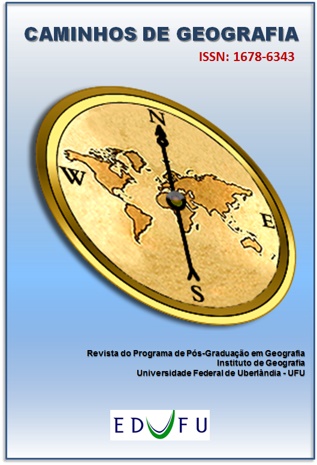ASSESSMENT OF VEGETATION RECOVERY ONTHE URBAN FOREST FRAGMENTS OF THE CLEÓPATRA/MOSCADOS STREAM HYDROGRAPHIC BASIN
DOI:
https://doi.org/10.14393/RCG238658740Keywords:
Biogeography, Landscape Ecology, Urban Green AreasAbstract
This research aimed to analyze the dynamics of the forest fragments vegetation located in the Cleopatra/Moscados streamhydrographic basin, in the central region of Maringá City, state of Paraná, Brazil, as a subsidy to landscape planning. The occurrence of forest recovery or regression was investigated in the periods between 2003, 2013 and 2018, as well as the current conditions of vegetation in each of the 20 fragments addressed. Considerable forest recovery was observed between 2003 and 2013, varying from 6.7% to 9.6% of the basin total area. This recovery occurred almost entirely in the valley bottoms (VB), which, according to the Rapid Ecological Assessment (REA) methodology, presented the worst conditions, mostly in an initial stage of ecological succession, low number of arboreal individuals, low diversity of native species, large number of exotic/invasive species and greater imbalance between ecological groups. Those of the Urban Parks (UP) andForest Reserves (FR) classes presented better conditions, with greater diversity of arboreal and native individuals, less presence of exotic/invasive species and greater balance between ecological groups. This condition is partially explained by the history of land use, given that the fragments of VB class showed a late recovery in comparison with the others.
Downloads
Downloads
Published
How to Cite
Issue
Section
License
Copyright (c) 2022 Giuliano Torrieri Nigro

This work is licensed under a Creative Commons Attribution-NonCommercial-NoDerivatives 4.0 International License.
Autores que publicam nesta revista concordam com os seguintes termos: a) Autores mantém os direitos autorais e concedem à revista o direito de primeira publicação, com o trabalho licenciado sob a Creative Commons Atribuição-NãoComercial-SemDerivações 4.0 Internacional. b) Autores têm permissão e são estimulados a publicar e distribuir seu trabalho online (ex.: em repositórios institucionais ou na sua página pessoal), já que isso pode gerar alterações produtivas, bem como aumentar o impacto e a citação do trabalho publicado. c) Em virtude de aparecerem nesta revista de acesso público, os artigos são de uso gratuito, com atribuições próprias, em aplicações educacionais e não-comerciais.











